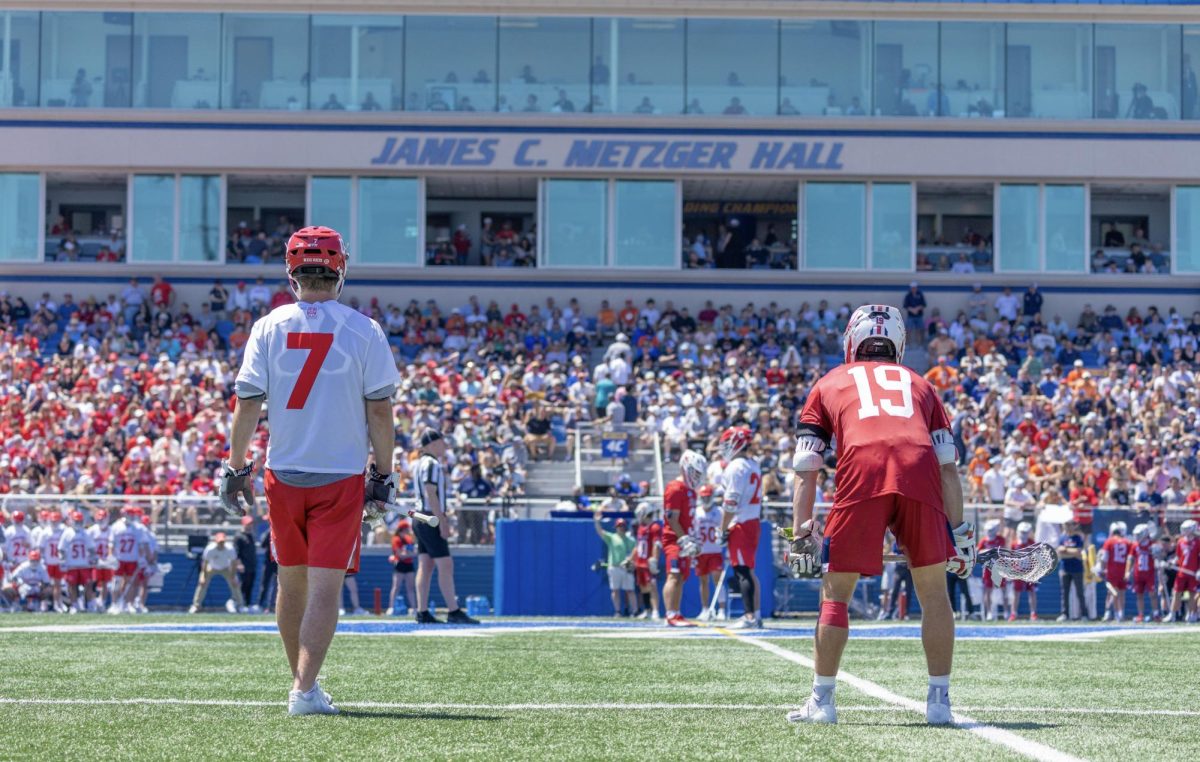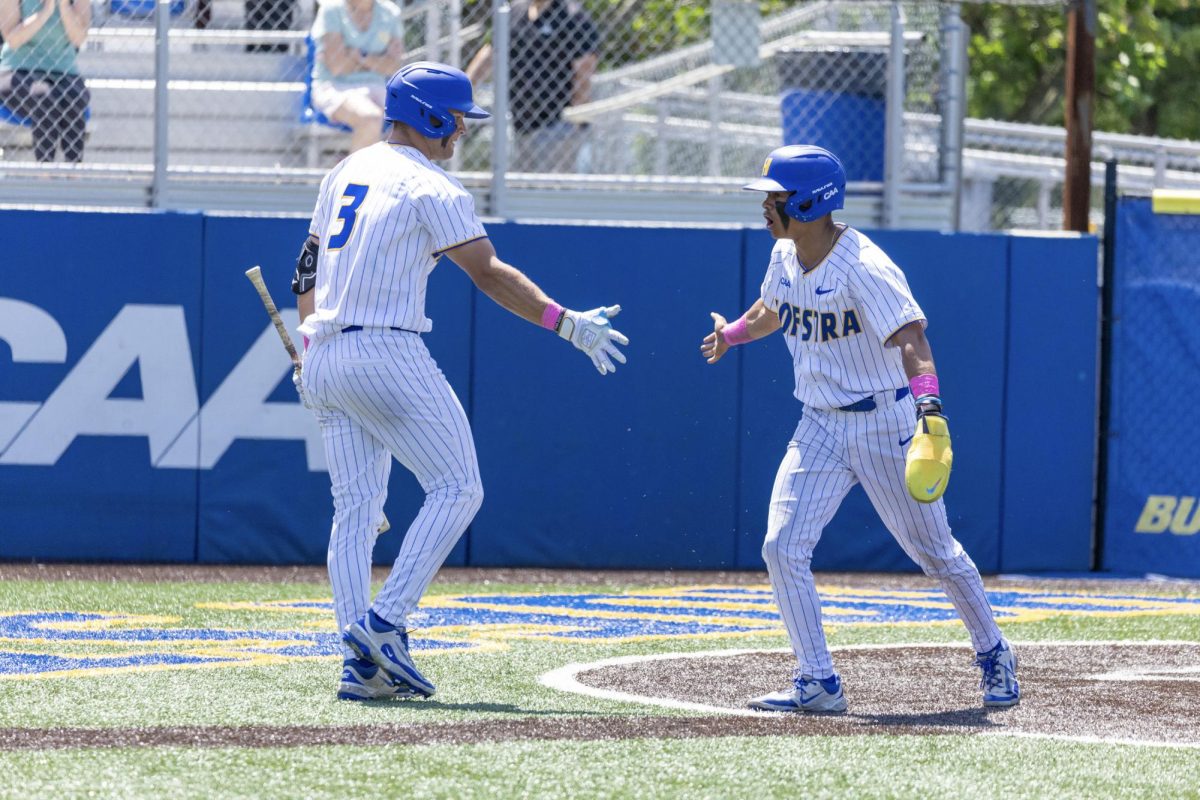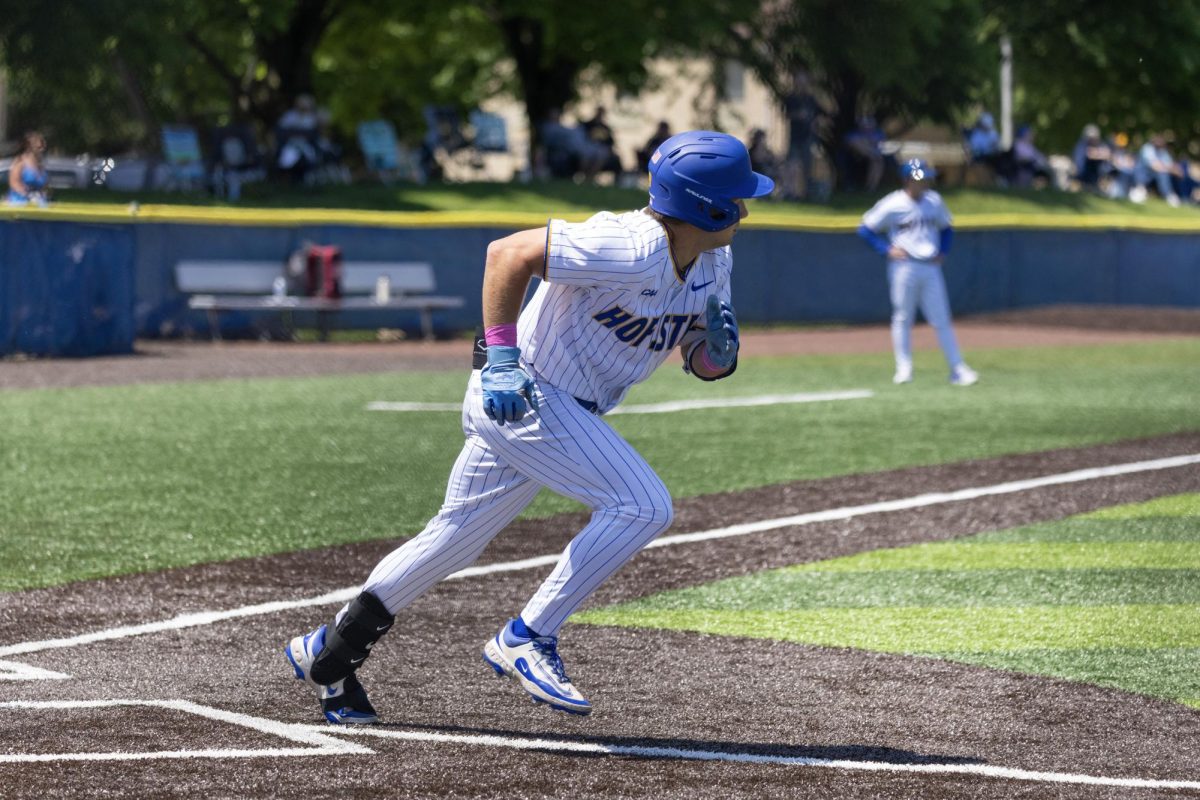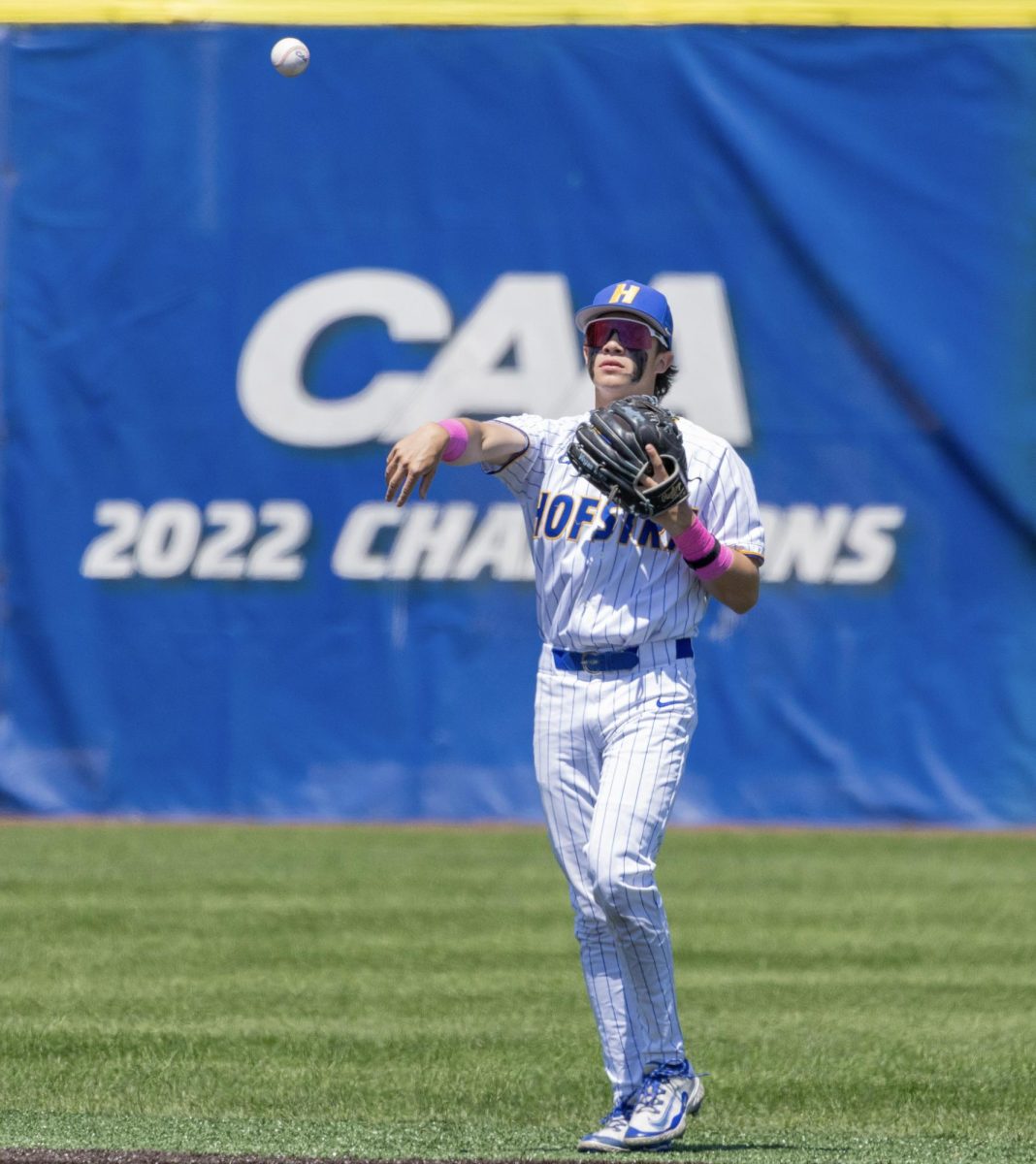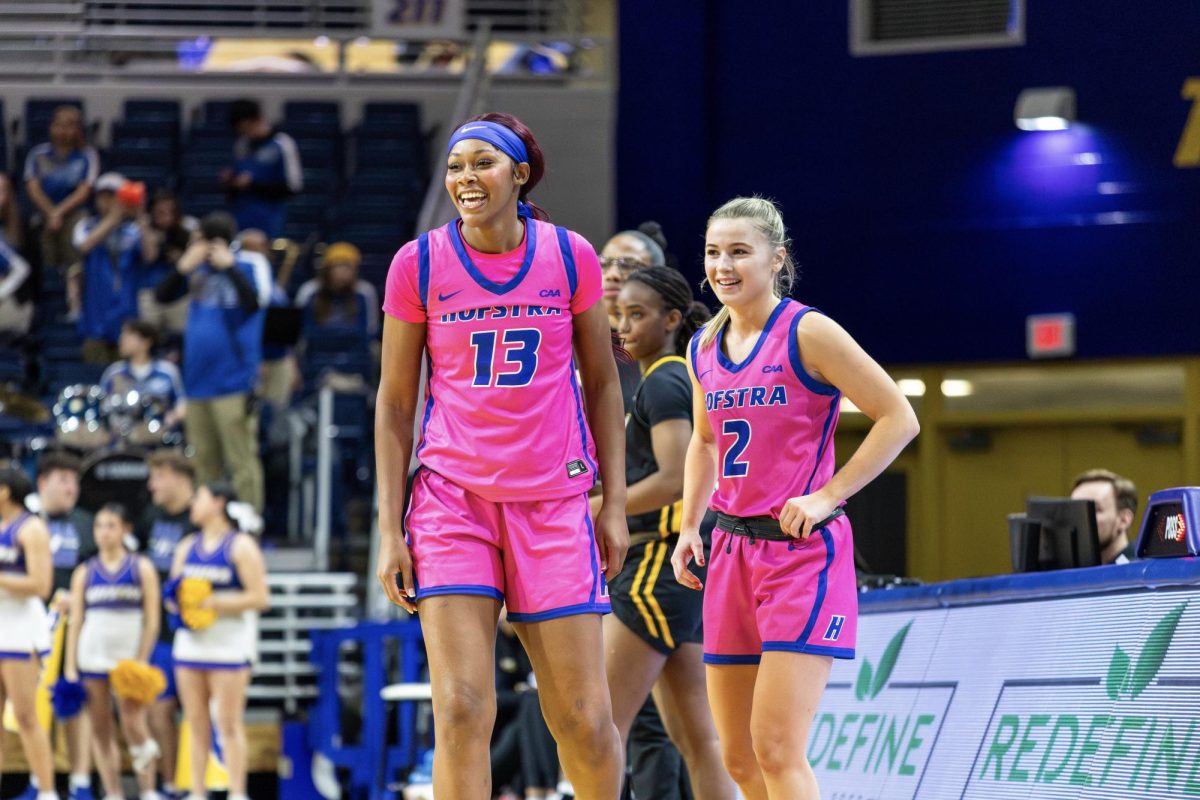https://youtu.be/-oeEnCPL9FQ?t=1m57s
On Feb. 4, 2,819 fans turned out to the Mack Sports Complex to watch the Hofstra men’s basketball team mount a furious comeback to top the Drexel University Dragons 79-77.
The attendance numbers were the best at a home game during the 2016-17 campaign, and the highest since over 3,000 came out to the final two home matchups last season, which featured the clinching of a CAA regular season title.
A raucous environment, possibly inspired by the reinvigoration of a new semester as well as a free Hofstra jersey giveaway, was definitely a relief to Hofstra head coach Joe Mihalich, who has been clamoring for students and fans alike to come out to games all season long.
“One thing we talk about is energy,” Mihalich said following a home loss to Towson University on Jan. 19.
“It’s tough to get energy in this building … let’s call it like it is.”
The feeling is understandable for Mihalich, who turned a program flailing out of control into a two-time 20-game winner in the matter of a few years.
If back-to-back years of sustained success wouldn’t put fans in the stands, what would?
This season, that success has taken a bit of a detour at times, as the team currently sits at 5-9 in-conference, good for seventh in the CAA.
Despite this, flashes of success have shined through: Hofstra finished non-conference play sitting at 8-5, and has now won three of its last four.
Some games stand out as particularly frustrating for home-court advantage.
On Dec. 6, the Pride hosted a crowd of 2,112 for its matchup against upstate New York’s St. Bonaventure University.
Not bad numbers, except for the fact that a large Bonnies fan contingent took over the ambiance of the arena for much of the night.
Then a month later, two of the first three home CAA games were unimpressive draws: a season-low 1,059 versus James Madison University, followed by a slight improvement of 1,331 against Towson.
The frustration has come through players as well, namely junior center Rokas Gustys following the Pride’s matchup against powerhouse University of Kentucky at the Barclays Center back in December. The game was attended by over 7,000 fans, but Gustys sounded off when asked about how it felt to hear “roars” from the crowd on his dunks.
“I don’t know what it [feels like] because we didn’t have [many] fans in the crowd,” Gustys said.
“I couldn’t even hear them to be honest with you.”
The issue of bringing fans to games is not unique to this season.
Hofstra sits 6th in CAA attendance this season, two spots better than last season, but a handful of fans on average lower than 2015-16.
Hofstra has been in the bottom half of the conference in turnout every year since after 2010-11, Charles Jenkins’ senior season, who is the last Hofstra player to be drafted to the NBA.
Mid-major attendance doesn’t garner impressive numbers nationwide.
Local conferences like the NEC and the Patriot League only average 1,100-1,300 fans per game, meanwhile the CAA comes in 16th of all 32 conferences, averaging 2,358 fans last season.
But those numbers are thanks in part to some of the schools in the CAA that Mihalich longs to have his arena resemble. University of North Carolina at Wilmington averages over 4,600 fans per game, and fields a stacked, CAA-favorite lineup at the Trask Coliseum.
College of Charleston brings in around 3,700 fans. Elon University sits second-to-last in attendance at more than 1,200 fans per game, but the Phoenix play in the tiny, 1,600-seat Alumni Gym, so a modest crowd packs the house.
“5,000 fans there [at UNCW], over 1,000 students, it’s what college basketball should be like,” Mihalich said in an interview on WRHU in early January. “There’s a great atmosphere there and quite frankly we need that, we don’t have it.”
The issue is not unique to the men’s team either, as the longing for better fan support extends to the women’s basketball team as well.
The women’s 700 plus fan average is actually good enough for 4th best in the CAA, but in a 5,000 seat arena, the empty seats loom large.
Just like the men’s team, the women’s have struggled this season to a 3-9 CAA mark, but last season was one that should have seen better numbers.
The glaring example fell on March 22. Hofstra had a perfect storm of excitement.
The Pride beat two teams to advance to the “Sweet 16” of the Women’s National Invitation Tournament, it faced a nationally recognized opponent in Virginia and, most of all, got the chance to host the game.
The result: an exciting 8-point win to advance to the quarterfinals. The numbers: just 344 fans in the stands.
The reasons for poor attendance have been oft-discussed and attempts to combat it have only temporarily seen improvements.
The largest hump for Hofstra to overcome is its environment as a “commuter school,” with only 46 percent of undergrads living on campus, according to collegeboard.org.
Along with giveaways and debatably effective marketing campaigns, Hofstra also hired Michael Neely, a Hofstra graduate, to assume the role of Director of Ticket Sales late last year.
The lack of support hits home mostly for those that actually do come out and attend games frequently.
Hofstra athletics PA announcer, Siddique Farooqi has had a front row seat to some of the lackluster crowds of recent seasons, and longs for the peak years on energy at the Mack.
“I’ve been on campus since 2005-06 as a grad student, and I remember back then there were students selling tickets in the parking lot, it was that packed, you couldn’t get a seat,” Farooqi said. “My message to the fans: You’re here at Hofstra, it’s a great arena, it’s a great experience, take advantage of it while you’re here.”
Coming off of the best fan turnout of the season, Hofstra fans have two final chances this coming week to prove they can show energy and persistence. Trial number one: Thursday night against the College of Charleston at 7 p.m.



